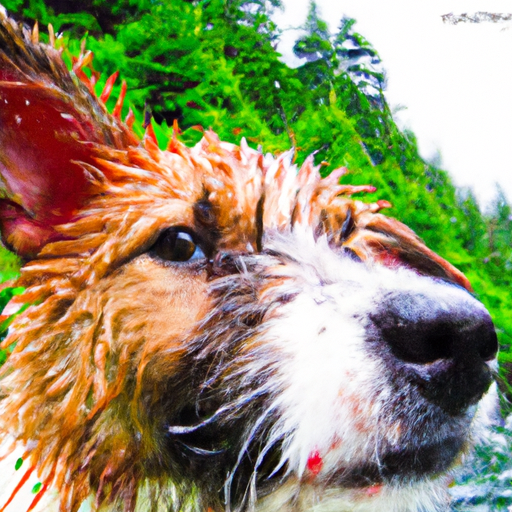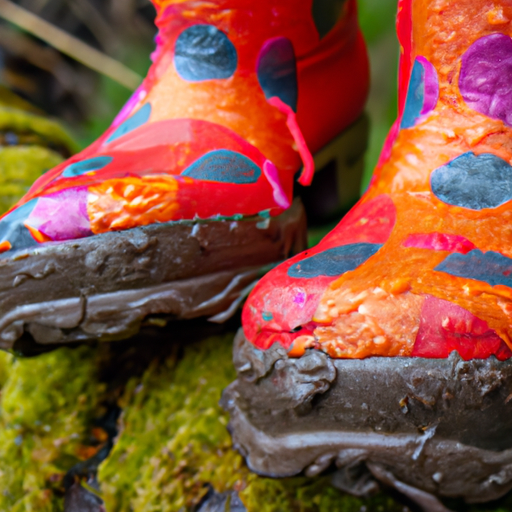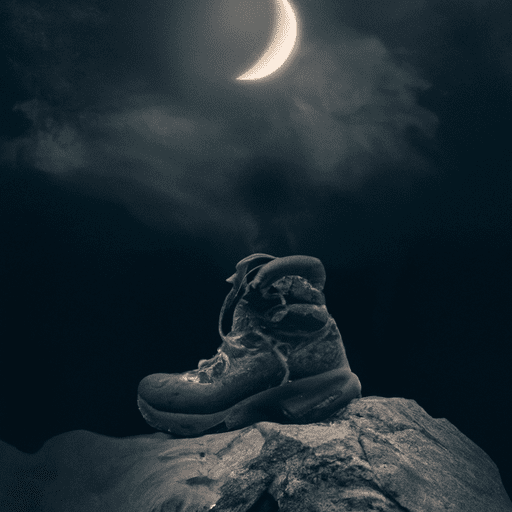Are you ready to explore the great outdoors with your furry companion? In this article, we will discuss the joy and excitement of training your dog for outdoor adventures. From hiking to exploring new places, outdoor training sessions provide a fantastic opportunity to bond with your pet while teaching them important skills. Whether you're a seasoned dog owner or a first-time adventurer, get ready to create unforgettable memories as you embark on thrilling journeys together. So, grab those leashes, pack some treats, and let's dive into the world of outdoor dog training!
1. Preparing for Outdoor Training
1.1 Choosing the right location
When it comes to outdoor training, choosing the right location is crucial. Look for places that offer enough space for your dog to move around comfortably and safely. Parks, open fields, or even your backyard can make great training grounds. Consider the terrain, as well. Different surfaces, such as grass or sand, can provide additional challenges for your dog and help improve their balance and coordination.
1.2 Gathering the necessary supplies and equipment
Before heading out for your outdoor training session, make sure you have all the necessary supplies and equipment. Essential items include a leash, collar or harness, treats, water, poop bags, and toys. It's also a good idea to have a clicker if you use clicker training. Additionally, if you plan to engage in activities like fetch or agility exercises, make sure you have the appropriate equipment, such as balls, frisbees, or agility obstacles.
1.3 Ensuring your dog's safety
Safety should always be a top priority during outdoor training sessions. Keep your dog on a leash, especially in public areas, to prevent them from running off or getting into dangerous situations. Ensure your dog is wearing identification tags with your contact information and consider microchipping them for added security. Be aware of potential hazards in the environment, such as toxic plants or wild animals, and take necessary precautions to keep your dog safe.
2. Basic Commands for Outdoor Training
2.1 Teaching your dog to come when called
The “come” command is one of the most important commands for your dog to learn. Start by practicing in a quiet and distraction-free area. Call your dog's name while using an enthusiastic and positive tone. When they come to you, reward them with a treat and praise. Gradually increase the distance and introduce distractions to make the command more challenging. Always reward your dog for coming to you, reinforcing their understanding that coming when called is both fun and rewarding.
2.2 Training your dog to stay
Teaching your dog to stay is crucial for their safety and the success of outdoor training sessions. Begin by asking your dog to sit or lie down. While they are in the position, use the command “stay” and take a step back. If your dog stays in place, reward them and gradually increase the duration of the stay. It's important to reinforce the command in different environments and with varying levels of distractions. Remember to reward and praise your dog for a successful stay.
2.3 Teaching your dog to sit and lie down
The “sit” and “lie down” commands are fundamental for control and obedience during outdoor training. To teach your dog to sit, hold a treat close to their nose and slowly move it up, causing their head to tilt back. As their head tilts back, their bottom will naturally lower into a sitting position. Once they are in a sitting position, reward them with the treat and praise. For the “lie down” command, start with your dog in a sitting position and slowly lower the treat to the ground. As they follow the treat with their nose, their body will naturally lie down. Reward and praise them for lying down successfully.
3. Enrichment Activities for Outdoor Training
3.1 Playing fetch with your dog
Playing fetch is a classic outdoor activity that dogs love. It not only provides physical exercise but also engages their natural prey drive and enhances their focus. Start by using a ball or a toy that your dog enjoys. Throw the ball a short distance and encourage your dog to fetch it. When they bring the ball back to you, reward them with praise and a treat. Gradually increase the distance of the throws and incorporate commands like “drop it” or “leave it” for added obedience training.
3.2 Engaging in hide and seek
Hide and seek is a fun activity that helps strengthen your dog's recall skills and mental stimulation. Start by having someone hold your dog while you hide in a nearby location. Call your dog's name and use an excited tone to get them to come and find you. When they find you, reward them with treats and praise. Reinforce the game by hiding in different spots and gradually increasing the difficulty level. This activity not only enhances your dog's training but also strengthens the bond between you and your furry friend.
3.3 Trying agility exercises
Agility exercises are a fantastic way to challenge your dog physically and mentally. Set up a small agility course in your backyard or find a local dog agility center. Start with basic obstacles like hurdles, tunnels, or weave poles. Guide your dog through the course using commands like “jump,” “tunnel,” or “weave.” Reward them with treats and praise for successfully completing each obstacle. As your dog becomes more proficient, you can introduce more complex obstacles and increase the speed and difficulty of the course.
4. Socialization Tips for Outdoor Training
4.1 Exposing your dog to new environments
Outdoor training provides an excellent opportunity for your dog to be exposed to new environments and stimuli. Take your dog to different parks, beaches, or urban areas to expose them to various sounds, smells, and sights. Keep the initial sessions short and gradually increase the duration as your dog becomes more comfortable. Positive exposure to new environments helps prevent fear or anxiety-based behaviors and promotes adaptability.
4.2 Encouraging positive interactions with other dogs
Socializing your dog with other dogs is essential for their development and well-being. Find dog-friendly places where your dog can interact with other well-behaved dogs. Start with controlled introductions, allowing the dogs to meet in a neutral and safe environment. Monitor their interactions closely and intervene if necessary. Reward your dog for positive behavior and gradually increase the duration and intensity of the socialization sessions. Positive interactions with other dogs promote good manners and reduce the risk of aggressive behavior.
4.3 Dealing with aggression or fear
If your dog displays signs of aggression or fear during outdoor training, seek professional guidance from a qualified dog trainer or behaviorist. Aggression and fear-based behaviors can be complex and require specialized knowledge. A professional can help identify the underlying causes and develop a tailored training plan to address these issues. It's important to prioritize the safety of both your dog and others when dealing with aggression or fear.
5. Advanced Skills for Outdoor Training
5.1 Teaching your dog to fetch specific items
Once your dog has mastered the basic fetch command, you can challenge them by teaching them to fetch specific items. Start by introducing a new object, such as a specific toy or a designated item like car keys. Connect the object with the command “fetch” and reward your dog when they bring it to you. Practice with different objects, gradually adding complexity. This skill can be useful in everyday situations, such as fetching the newspaper or bringing you specific items around the house.
5.2 Training your dog to walk off-leash
Walking your dog off-leash requires a high level of trust and obedience. Start by practicing in a secure and enclosed area, such as a fenced-in yard or a safe park. Use a long training leash at first to provide a sense of freedom while maintaining control. Practice recall commands and reward your dog for coming when called. Gradually increase the distance and duration of off-leash walks as your dog demonstrates consistent obedience. Remember to always prioritize your dog's safety and follow local leash laws.
5.3 Practicing recall in distracting situations
Recall is a crucial command that can save your dog's life in potentially dangerous situations. Practice recall in various outdoor environments with increasing levels of distractions. Begin in a quiet area and gradually introduce distractions like other dogs, people, or wildlife. Use high-value treats or toys to motivate your dog to come to you when called. Reward and praise them enthusiastically when they respond promptly. Consistent practice in distracting environments will help solidify the recall command and ensure your dog's safety.
6. Building Stamina and Endurance
6.1 Gradually increasing exercise duration and intensity
Outdoor training sessions offer an excellent opportunity to build your dog's stamina and endurance. Start with shorter sessions, gradually increasing the duration as your dog becomes fitter. Remember that different breeds and individual dogs have different exercise needs, so tailor the intensity and duration of the sessions accordingly. Monitor your dog's energy levels and adjust the training accordingly to prevent overexertion or exhaustion.
6.2 Incorporating outdoor games to improve fitness
Engaging in outdoor games is a fun way to improve your dog's fitness levels. Games like running, chasing, or obstacle courses can help improve their cardiovascular health, agility, and overall stamina. Mix in activities that encourage your dog to use their natural instincts, such as scent games or hide and seek. These games not only provide physical exercise but also mental stimulation.
6.3 Monitoring your dog's health during active sessions
During outdoor training sessions, it's important to monitor your dog's health and well-being. Keep an eye out for signs of exhaustion, dehydration, or overheating. Ensure your dog has access to fresh water and take regular breaks to allow them to rest and cool down. If you notice any concerning symptoms like excessive panting, increased heart rate, or limping, stop the activity and seek veterinary advice if needed. Pay attention to your dog's limitations and always prioritize their safety and health.
7. Troubleshooting Common Challenges
7.1 Dealing with distractions during training
Distractions are an inevitable part of outdoor training. Dogs can be easily tempted by smells, noises, or other animals. To help your dog stay focused, gradually introduce distractions during training sessions. Start with low-level distractions and gradually increase the difficulty. Use positive reinforcement techniques and rewards to redirect your dog's attention back to you. Consistent practice and patience will help your dog stay focused even in the most distracting environments.
7.2 Overcoming stubbornness or lack of motivation
Some dogs may exhibit stubbornness or a lack of motivation during training sessions. In such cases, it's important to find ways to make training more enjoyable and rewarding for your dog. Use high-value treats, toys, or playtime as rewards for successful responses. Keep training sessions short and engaging to prevent boredom or frustration. If your dog seems unresponsive, take a step back and reassess your training approach. Sometimes, adjusting the training techniques or seeking professional guidance can make a significant difference.
7.3 Addressing behavioral issues
Outdoor training can sometimes exacerbate existing behavioral issues in dogs. If you notice persistent behavioral problems, such as excessive barking, aggression, or anxiety, it's important to address them appropriately. Seek guidance from a professional dog trainer or behaviorist who can analyze the root causes of the behavior and develop an effective behavior modification plan. Early intervention and consistent training can help resolve behavioral issues and create a positive training experience for both you and your dog.
8. Taking Safety Measures
8.1 Using appropriate leashes and harnesses
Choosing the right leash and harness for your dog is essential for their safety and comfort during outdoor training. Consider the size, breed, and energy levels of your dog when selecting a leash. For stronger and more energetic dogs, a sturdy leash and a harness may provide better control. Ensure that the leash is comfortable and fitted properly to prevent any discomfort or injuries.
8.2 Utilizing identification tags and microchips
Accidents can happen, and it's important to have proper identification for your dog in case they become separated from you during outdoor training. Ensure your dog wears a collar with identification tags that include your contact information. Additionally, consider microchipping your dog as a reliable form of identification. Microchipping is a simple procedure that can greatly increase the chances of your dog being reunited with you if they get lost.
8.3 Being aware of potential hazards in the environment
When training outdoors, it's crucial to be aware of potential hazards in the environment. Keep an eye out for toxic plants, sharp objects, or hazardous substances that your dog may come into contact with. Ensure that the training area is free from any potential dangers or obstacles that could harm your dog. Being proactive and attentive to your surroundings will help keep your dog safe during outdoor training sessions.
9. Planning Outdoor Adventures with Your Dog
9.1 Researching dog-friendly destinations
Planning outdoor adventures with your dog can be an exciting way to explore new places together. Research dog-friendly destinations such as national parks, dog-friendly beaches, or hiking trails. Check the rules and regulations regarding dogs in the area, including leash requirements and any breed restrictions. Planning ahead will help ensure a safe and enjoyable experience for both you and your dog.
9.2 Packing essentials for trips and outings
When going on outdoor adventures with your dog, it's important to pack essential items to meet their needs. Pack enough food, water, and treats for the duration of the trip. Bring along a collapsible water bowl, waste bags, and any necessary medications your dog may need. Additionally, consider packing a first aid kit specifically for your dog, including items like bandages, antiseptic wipes, and tweezers for tick removal.
9.3 Creating a safe and comfortable space for your dog
Whether you're camping, hiking, or enjoying a day at the beach, it's important to create a safe and comfortable space for your dog. Bring a well-ventilated crate or a comfortable bed where your dog can rest. Provide shade and shelter from extreme weather conditions, and secure the area to prevent your dog from wandering off. Always supervise your dog and never leave them unattended in unfamiliar surroundings.
10. The Benefits of Outdoor Training for Dogs
10.1 Physical exercise and mental stimulation
Outdoor training provides ample opportunities for dogs to engage in physical exercise and mental stimulation. Running, playing, and exploring the outdoors helps maintain a healthy weight, improves cardiovascular fitness, and releases pent-up energy. Mental stimulation from new environments, smells, and challenges promotes cognitive development and prevents boredom or destructive behaviors.
10.2 Strengthening the bond between owner and dog
Outdoor training sessions offer valuable time for bonding and strengthening the relationship between you and your dog. Working together on training commands, engaging in activities, and exploring new environments builds trust and reinforces your role as their leader and caregiver. Sharing positive experiences outdoors enhances the bond and creates lifelong memories.
10.3 Promoting a healthy lifestyle
Regular outdoor training promotes a healthy and active lifestyle for both you and your dog. Engaging in outdoor activities together encourages you to stay active, explore new places, and appreciate the beauty of nature. It sets a positive example for living a healthy lifestyle and helps prevent health issues related to sedentary behavior.
Overall, embracing outdoor training with your dog allows you to create a fun and fulfilling experience while addressing their physical, mental, and social needs. With proper preparation, training, and safety measures, you and your furry friend can enjoy the great outdoors and build a stronger, happier bond.






